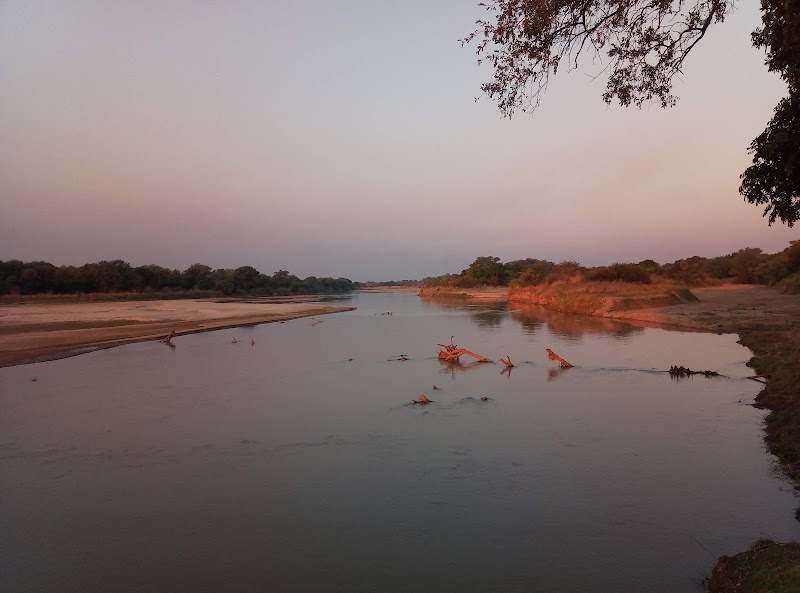
Weekly Market Days in Lundazi: A Practical Guide to Eastern Province’s Vibrant Hub
Experience Lundazi’s weekly markets, where vibrant produce, local crafts, and spirited exchanges define the heartbeat of Eastern Province. This guide offers practical tips for navigating the dynamic market days and making the most of your visit.
Arrive Early for Best Finds
Markets peak early, with freshest goods and lighter crowds between 7 a.m. and 9 a.m. Avoid afternoon heat and diminishing stalls by planning morning visits.
Wear Sturdy Footwear
The market grounds are uneven with loose red soil and occasional sharp stones; closed-toe shoes with good grip provide safe and comfortable movement.
Carry Cash in Local Currency
Transactions are predominantly cash-based, so bring sufficient Zambian Kwacha in smaller bills to ease purchasing and bargaining.
Practice Respectful Photography
Always ask vendors before taking photos to maintain local trust and respect cultural sensitivities around image use.
Weekly Market Days in Lundazi: A Practical Guide to Eastern Province’s Vibrant Hub
Every Thursday and Sunday, Lundazi’s open-air market springs into life, inviting visitors and locals alike to experience the pulse of Eastern Province's trade and culture. Situated roughly 80 kilometers from Chipata, Lundazi offers not only a chance to engage with traders but also a glimpse into daily life in rural Zambia. The market is a sprawling affair on dirt grounds, framed by stands loaded with colorful produce, handcrafted goods, and the constant call of vendors. Its compact layout makes it manageable to navigate in two to three hours, perfect for a morning exploration.
Approaching the market, senses sharpen: the earthy aroma of fresh tubers, the sharp tang of spices, and the occasional scent of smoke from cooking fires daring the breeze to carry it. Stalls brim with maize, cassava, groundnuts, and ripe fruits that seem to glow in the mid-morning sun. You'll find baskets woven tight and sturdy, fabrics with bold patterns that catch the light, and tools that speak to the hands of local artisans.
The physical terrain is flat but uneven, so footwear that grips is a must — the red soil clings to shoes, and a sharp pebble awaits when you're not watching. Hydration is key; the market’s shade is sparse, and the day heats rapidly by 10 a.m. Start early to avoid both heat and crowds, planning to arrive by 7 a.m. and finish mid-morning when the activity starts to wane.
Beyond goods, the market is a social gesture. Elders sit quietly, sharing stories with the younger generation who move between stalls like currents in a river, swift and purposeful. The market’s rhythm pulses with the exchanges - a lively barter or a firm handshake sealing a sale. This isn’t a place to rush; it asks for respect and curiosity. Questions about produce, origins, or price are welcomed and often returned with equal warmth.
To prepare for your visit: carry local currency for cash-only sales, and consider a backpack small enough to carry purchases yet large enough for essentials. Sunscreen and hats are straightforward defenses against the midday sun that dares to linger. Cameras are welcome, but ask permission before photographing vendors, for trust here is an exchange as tangible as any sale.
While visits to Lundazi’s market days invite adventure and connection, they demand attentiveness. The market is fiercely itself, a force of culture sustained by community and tradition, ready to meet you with openness if you come ready.
Nearby Trips
All Adventures
Boat Charters
Water Activities
Adventures near Lundazi, Eastern Province
Discover the unique and memorable adventures that make Lundazi, Eastern Province special.
Frequently Asked Questions
What are the market days in Lundazi?
Lundazi hosts its vibrant local markets every Thursday and Sunday. These are the best days to find fresh produce, crafts, and connect with local vendors.
Is it safe for tourists to visit the market alone?
Yes, the markets are generally safe during operating hours, especially in the morning when they are busiest. Staying aware of surroundings and securing belongings is advised.
Can I use credit cards at the market?
Most vendors accept only cash, so it’s important to bring enough Zambian Kwacha in smaller denominations for easy transactions.
Are there places to eat or drink near the market?
Yes, small food stalls offer local snacks and fresh juices. However, it’s recommended to bring your own water bottle and snacks if you plan an extended visit.
What local crafts can I expect to find?
The market features handwoven baskets, textiles with traditional patterns, carved wooden tools, and often fresh pottery pieces, made by regional artisans.
Are there any local customs I should be aware of while visiting?
Engage politely with vendors, ask permission before photographing people or goods, and be prepared to negotiate prices respectfully, as bargaining is common and welcomed.
Recommended Gear
Closed-toe hiking shoes
Offers stability on uneven dirt ground and protects from loose stones.
Wide-brimmed hat
Provides shade during hot midday sun, reducing risk of heat exhaustion.
Reusable water bottle
Essential for staying hydrated during market hours, especially in warm seasons.
Small backpack
Helps carry purchases and personal items easily without burdening the hands.
Local Insights
Hidden Gems
- "Behind the main market, small side lanes reveal hamlets where artisans work on weaving and carving, quieter and rich with insight into the craft process."
- "The nearby Chama River runs close enough that some vendors set up near its banks, providing a fresh breeze and a calm spot for breaks."
Wildlife
- "Birdwatchers may spot red-winged starlings and village weavers hovering among trees on market edges."
- "Occasional sightings of slender mongoose on the outskirts are a quiet reminder of the area's biodiversity."
History
"Lundazi has been a trading point in the Eastern Province since colonial times, its market evolving from small barter gatherings into the structured, lively hub seen today."
